SAP Master Data
Filter By
Browse By
- SAP Analytics and AI
- SAP Application Development and Integration
- All SAP Application Development and Integration
- SAP ABAP
- SAP ABAP Development Tools
- SAP ABAP Test Cockpit
- SAP API Management
- SAP BAPI
- SAP Basis
- SAP BRF
- SAP Business Application Studio
- SAP CMS
- SAP Design Studio
- SAP Development Tools
- SAP DevOps
- SAP EAI
- SAP EDI
- SAP Extension Suite
- SAP Fiori
- SAP Fiori Elements
- SAP Integration Suite
- SAP Low Code Application Development
- SAP Low Code Automation
- SAP Netweaver
- SAP Release Management
- SAP UI5
- SAP Web Application Server
- SAP Web IDE
- SAP Business Process Management
- SAP Center of Excellence
- SAP CIO
- SAP Customer Experience
- SAP Data and Data Management
- All SAP Data and Data Management
- SAP BW
- SAP BW/4HANA
- SAP Crystal Reporting
- SAP Data Archiving
- SAP Data Center
- SAP Data Governance
- SAP Data Integration
- SAP Data Migration
- SAP Data Quality
- SAP Data Services
- SAP Data Strategy
- SAP Data Visualization
- SAP Data Warehouse Cloud
- SAP DMS
- SAP Document Control
- SAP EIM
- SAP ETL
- SAP ETL Tools
- SAP HANA
- SAP HANA Administration
- SAP HANA Deployment Infrastructure
- SAP HANA Studio
- SAP Master Data
- SAP Master Data Governance
- SAP MDM
- SAP Enterprise Architect
- SAP Enterprise Asset Management
- SAP ERP
- SAP Finance
- All SAP Finance
- SAP Accounting
- SAP AR AP
- SAP Asset Accounting
- SAP Billing Systems
- SAP BPC
- SAP BRIM
- SAP Cash Management
- SAP Central Finance
- SAP Controlling
- SAP COPA
- SAP Cost Center Accounting
- SAP e-invoicing
- SAP FICO
- SAP Finance Automation
- SAP Financial Closing Cockpit
- SAP Financial Consolidation
- SAP Financial Planning
- SAP FX Risk
- SAP General Ledger
- SAP Global Tax Management
- SAP Hyperion
- SAP Order to Cash
- SAP Payment Processing
- SAP Profitability Analysis
- SAP Rebate Management
- SAP S/4HANA Finance
- SAP Universal Journal
- SAP Governance Risk and Compliance
- SAP Human Capital Management
- SAP Intelligent Technologies
- SAP Platform and Technology
- All SAP Platform and Technology
- SAP Business Technology Platform
- SAP Cloud Connector
- SAP Cloud Integration Platform
- SAP Cloud Migration
- SAP Cloud Platform
- SAP Cloud Providers
- SAP Cloud Strategy
- SAP Container Platform
- SAP Digital Asset Management
- SAP Digital Integration Hub
- SAP Digital Signature
- SAP HANA Enterprise Cloud
- SAP HEC
- SAP Hyperscalers
- SAP Infrastructure
- SAP Messaging
- SAP Smart Forms
- SAP Quality and Testing
- SAP Security
- SAP Spend Management
- SAP Supply Chain Management
- All SAP Supply Chain Management
- SAP APO
- SAP Asset Management
- SAP Business Network
- SAP Digital Manufacturing Cloud
- SAP Digital Twin
- SAP EWM
- SAP IBP
- SAP Inventory Management
- SAP Label Printing
- SAP Logistics
- SAP Manufacturing
- SAP Manufacturing Automation
- SAP MES
- SAP MII
- SAP MM
- SAP MRO
- SAP MRP
- SAP Order Management
- SAP Plant Maintenance
- SAP PLM
- SAP Production Planning
- SAP S&OP
- SAP SD
- SAP SPM
- SAP Supply Chain Planning
- SAP Track and Trace
- SAP Transportation Management
- SAP System Administration
SAP Master Data – Foundation of Data Analytics
Nobody notices a home’s foundation. A good home foundation will not make its presence known, whereas a poor foundation will manifest itself in continued problems – in cracks in walls, uneven floors, doors that won’t shut, gaps in windows, and so on!
Master data is very much like the home foundation. Nobody notices master data when it is good. When it is poor, it shows up in every business process – painfully! Every employee, customer, and vendor feel the pain of not having company-wide, reliable, well-maintained, easily updated, secure and compliant master data.
SAP Master Data – Foundation of Data Analytics
Nobody notices a home’s foundation. A good home foundation will not make its presence known, whereas a poor foundation will manifest itself in continued problems – in cracks in walls, uneven floors, doors that won’t shut, gaps in windows, and so on!
Master data is very much like the home foundation. Nobody notices master data when it is good. When it is poor, it shows up in every business process – painfully! Every employee, customer, and vendor feel the pain of not having company-wide, reliable, well-maintained, easily updated, secure and compliant master data.
In an era where data analytics drives the revenue bus for all companies, a reliable single source of truth of company data is mandatory. Without this foundational truth, all analytics are garbage-in, garbage-out leading to sub-standard decisions and immense amount of frustration.
There are several huge advantages in having reliable and comprehensive master data in all the relevant domains – vendor, customer, materials/products, employee, etc.
- Efficient business processes
- Reduced time to market
- Faster and better data analytics
- Better compliance
- Reduced workload
Yet, SAP master data has become a highly challenging asset to maintain for many reasons – a SAP+third-party applications model, legacy applications, global footprint, compliance constraints, and finally, the increasing multi-cloud, hybrid deployment models.
Once upon a time, SAP was a monolith in many companies, and it was possible to maintain one-source for master data. However, with the proliferation of solutions around SAP, master data is strewn across the company within SAP and non-SAP systems. With complex business processes and supply chains that cut across internal and even vendor, partner or customer systems, master data becomes very difficult to maintain and govern. Vendors such as Laidon solve this with a low-code, prebuilt master data governance solution on the cloud. SimpleMDG’s streamlined user interface retrieves real-time ERP master data and initiates maintenance requests for all CRUD (Create, Read, Update and Delete) processes.
Companies with legacy systems also struggle to migrate their old master data to new systems – the complexity, the costs and the business risks pose difficult hurdles.
Some significant problems in today’s master data involve duplication – lack of proper tools to validate and prevent duplications, lack of well-defined, unique ids and disparate systems make it very easy to generate duplications. Vendors such as Winshuttle enable automation to solve duplication challenges.
Compliance and security are additional complexities today with cloud-based data stores, especially with compliance requirements on who can access personal customer data, where it can be stored and how it should be archived. Governance is the key as this article outlines.
SAP’s own MDM solution with its governance module also continues to provide robust functionality.
1302 results
-

Building a Robust Master Data Foundation with SimpleMDG
Published: 21/March/2022
Reading time: 7 mins
A robust Master Data governance platform is not only critical for the business process and analytics excellence of an enterprise but has a key role to play in the migration to SAP S/4HANA. Deepa Salem, Vice President and Research Director, SAPInsider With the explosion of data generated across the enterprise, we have entered an era...…
-

How to Use Workflow for Better Data Control and Integrity
Published: 09/August/2012
Reading time: 14 mins
Learn how to configure the workflow-driven change request management functionality in SAP GRC 10.0, which is designed to enforce control in the maintenance of master data. Key Concept Change Request Management is a control process aimed at ensuring that changes to master data are independently reviewed by appropriate personnel to ensure that the proposed modifications...…
-

Understand the Data Model for Integration between SAP CRM and SAP Industry Specific Solution – Utilities
Published: 23/February/2012
Reading time: 21 mins
Prevent data errors by learning how data is replicated between SAP CRM and SAP Industry Specific Solution – Utilities (IS-U), as well as the relationships between objects in each system. Learn several common replication errors between the two systems and how to avoid them. Key Concept The SAP CRM/SAP Industry Specific Solution – Utilities (IS-U)...…
-
-

Look Deeper into SAP Fiori: It’s More Than a Pretty UI
Published: 30/November/2016
Reading time: 14 mins
Open Data Protocol (OData) services power the back end of your SAPUI5 applications. Because OData is a web standard protocol, its flexibility makes it useful above and beyond Fiori applications. In this article, several alternate uses for OData are proposed, with examples to illustrate expanding your use of OData services. Key Concept Open Data Protocol...…
-

Data Modeling with Time-Dependent Master Data
Published: 01/April/2004
Reading time: 11 mins
Depending on the setup of your system, new master data can overwrite your old data when it is loaded. However, you can view data from a certain point in time with time-dependent master data. The author debates the benefits and drawbacks of adding time dependency to your data model. The need for time-dependent master...…
-

An Introduction to SAP Predictive Analysis and How It Integrates with SAP HANA
Published: 30/June/2013
Reading time: 57 mins
In this exclusive report, take a walk into the world of SAP Predictive Analysis and how it ties into SAP HANA and SAP Lumira (formerly known as SAP Visual Intelligence). Learn the importance of general predictive modeling concepts, and then apply those concepts as part of a bigger discussion about the architecture and features of...…
-

SAP Data Services: How to Extract, Transform, and Load Data into SAP HANA
Published: 12/June/2017
Reading time: 15 mins
Examine and compare the classic SAP Data Services approach for extracting, transforming, and loading (ETL) processes to the functionality that is native to SAP HANA to determine optimal integration.
-
-

How SAP Fiori Impacts SAP HR Functionality: Q&A with Jeremy Masters on the Roadmap for HR Renewal and SAP SuccessFactors
Published: 01/December/2016
Reading time: 30 mins
SAP Fiori is an SAP UI5 platform to make the user experience more modern and consumer-grade. What is the user experience roadmap around new HR functionality for HR Renewal and SAP Fiori applications? How does it fit within SAP’s overall cloud strategy with SAP SuccessFactors? HR 2017 speaker Jeremy Masters, Managing Partner at Worklogix, answered…
-

Support Regulatory Compliance Across Your SAP Landscape with SAP Data Privacy Integration
Published: 28/January/2021
Reading time: 13 mins
While it is important for businesses to ensure data privacy to gain the trust of both customers and business partners, the protection of this data is critical for adhering to the regulations that countries are introducing at a growing rate, with more data privacy bills introduced in 2020 compared to 2019. These regulations — such…
-

Data Can’t Wait: Start Planning Today
Published: 03/October/2019
Reading time: 14 mins
Since the inception of SAP S/4HANA, one of the main risks that often derails the implementation journey centers around preparing, cleansing, converting, and managing the data. This article presents leading practices that SAP customers can leverage during their SAP S/4HANA implementations to significantly reduce program risks associated with the data conversion process. The advice provided…
Featured Experts
-

Clifford Seckman
President, Virginia Software Group, Inc.
-

Sparsh J Varsani
SAP Consultant
-

Akash Kumar
Associate General Manager, HCL
Become a Member
Unlimited access to thousands of resources for SAP-specific expertise that can only be found here.
Upcoming Events
Related Vendors
Your request has been successfully sent

